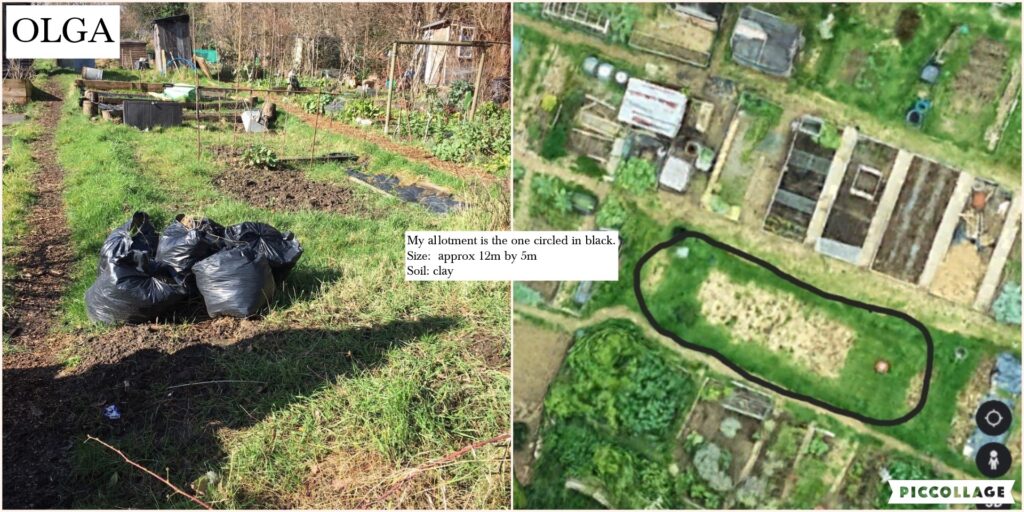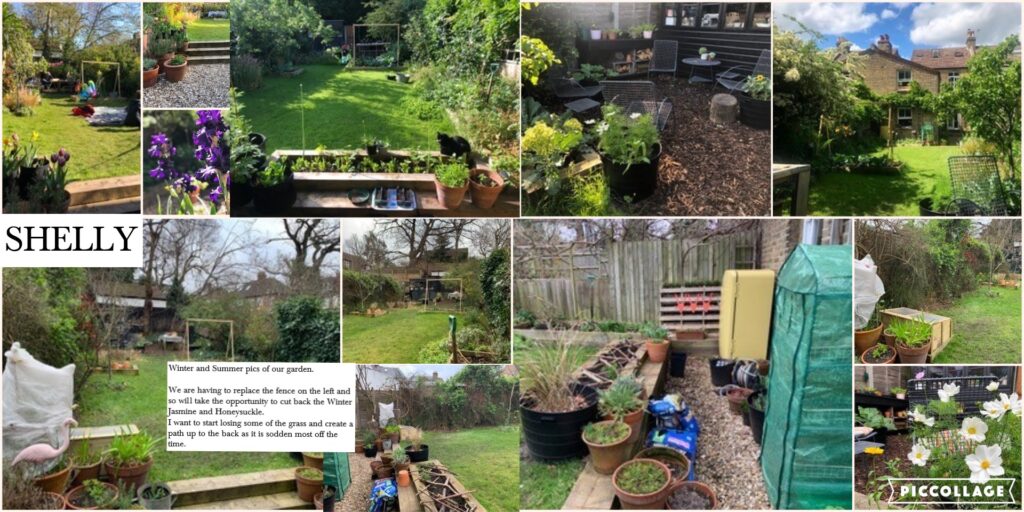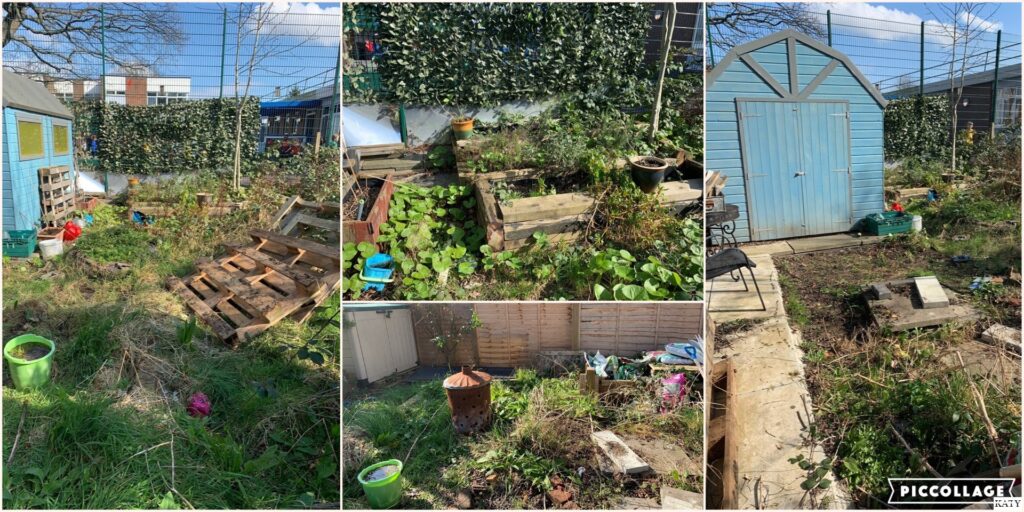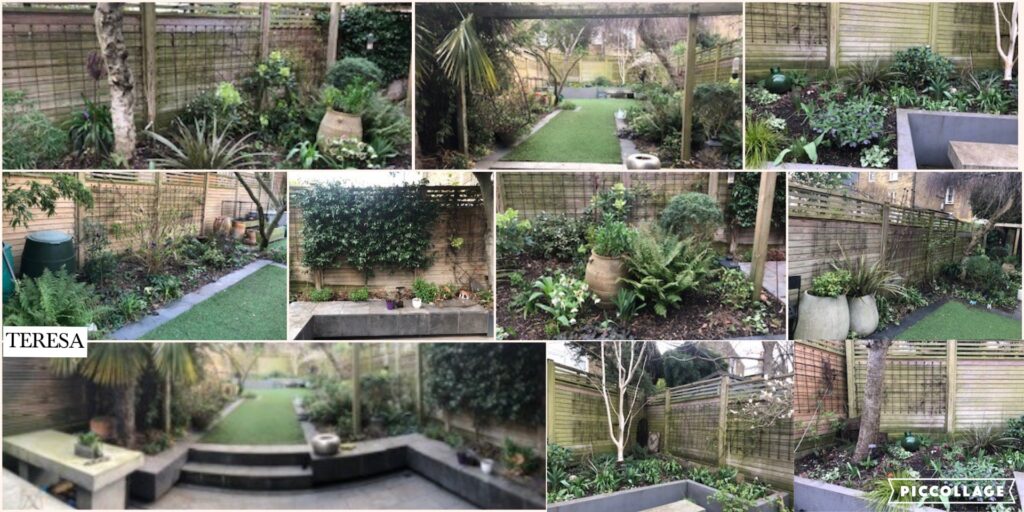… but we can all learn so much from each other’s gardens.
Two things that were very well illustrated in our ‘Making the Most of Your Garden’ course in south London last week. We loved meeting our students and hearing about what had brought them to the class and how they felt about their London gardens. We had wondered when we set up the class how much variety we would see amongst the students, and their gardens. And if there was a lot, would it be a challenge running a gardening course which used students’ own real gardens as the case studies? Might it be impossible to juggle really analysing one person’s shady balcony while being aware that another was waiting for us to get onto their sunny borders?
But there was no need to worry. It was certainly true that the group provided us with a full range of gardens to use as case studies but the variety turned out to be a plus and as one of the students said, it was ‘like group therapy for gardens’. There was so much that applied to everyone, whatever their garden, and that was only enhanced by learning from each other’s gardens and questions. By the end of the two days the students were all really interested in each other’s gardens and even suggesting staying in touch with each other!
An exciting new start in a London allotment
Olga, for example, came over from north London, arriving at the course with an allotment, or half of one at least. She knew that vegetables had to be grown in groups … and that she wanted to grow medicinal plants, but apart from that she didn’t know where to start, though she was very excited to get going.

Olga was the only one on the course who was looking for advice for an allotment as opposed to the usual London garden, but what an exciting opportunity. We discussed the allotment, what she might do, how much time she might have. We talked about soil, what it is and how plants grow in it. Extensive discussions about compost gave her a clear picture.
She brought a photo of the plot for day two, by which time all the materials she needed in terms of an introduction to crop rotation and vegetable groups had been prepared. Everyone had a ten-minute power talk on vegetables and Olga left knowing her legumes from her root vegetables … and how to rotate a crop … so to speak.
We wish Olga well with her new allotment and are really excited for her. We think she’ll look back on these photos with surprise one day at how far she’s come and we hope she’ll send us the ‘after’ photos to compare with these ‘before’.
Taking it up to the next level in a beautiful back garden

Shelly was one of those students who seemed to know more than I did! She came to the course with photos of a wonderful London garden showing love and time spent in the garden, a sophisticated palette of plants and even a cold frame!
An instinctive gardener, Shelly arrived wanting to dot some i’s and back up her knowledge with knowledge … whatever that may mean. She was at a point in her life when the kids have kicked a football around the garden for long enough and it was time for her to reclaim her garden.
Hopefully with the talk and shared ideas, as well as sharing her photos, she left the course with a plan and some new ideas for her lovely garden.
It can be so daunting getting going on the garden, so many obstacles, so little time!

You could see from the photos of it how much character and potential Katy’s London garden had. But she arrived at the course feeling rather overwhelmed … by access, cats, foxes, weeds, mess … and she couldn’t quite work out where to start (or restart).
We discussed her photos and actually it was clear that much work had already been done during the dreaded lockdown but what she really needed now was a plan: a structure; more raised beds; a couple of good climbers; a plan of action for next weekend and onwards.
Katy’s not alone in feeling daunted, those challenges are shared by all of us and can feel so overwhelming when we’re all so busy already. But I have no doubt that Katy’s garden will be delightful and give her so much pleasure when she takes ownership and deals with all those small but seemingly insurmountable challenges that gardens can pose.
Sometimes you need to take a step back

What Teresa needed was some design input. She needed to start to think about repetition, scale, form.
Here was a student who had a nice garden and like lots of us needed to be helped to the next level. She needed to know what she knew she needed to know, but didn’t know … if you know what I mean!
Specifically she decided to seek advice on a particular bed, at the back of her garden. Many of her plants were lonely, doing well but planted in ones or twos, and too low to be ‘read’ from a distance. Hopefully we gave her the confidence to plant lots more of the same things, to build on her keen eye for colour by creating a fabulous shady bed, with winter bark, structure from winter flowering shrubs and repeated grasses to give movement and form all year round.
You can read more about our Making the Most of Your Garden course on our Courses page, check when the next one is on our Calendar page, and book in on our Register page.